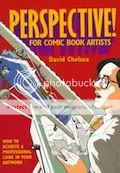ShopDreamUp AI ArtDreamUp
Cartoon Mania
Drawing Updates
Been trying to find a style for my own comic about current events and history (which I may yet someday make). So I've been looking to art that does it well for study. :)
Drawing Thoughts
Understanding Comics by Scott McCloud described a triangular compass of cartoon styles, with its three corners as: realistic (e.g. photos, modern super hero comics, etc.), language/meaning (simplified detail, cartoony), and 'picture pane' (abstract or artistic stuff). The 'meaning' corner looked interesting, because it only kept what was necessary to convey the same meaning, and conciseness = awesome.
humon (https://www.deviantart.com/humon) is very good at this. She h
Revamping My Account
Updates
This marks a new, more art-focused version of my DeviantArt account. I have removed most of my stamps, and will not be posting more. My old stamps can be found here.
Drawing Thoughts
The eye is so fantastically complicated and subtle to draw, yet understandable when you break down why it looks the way it does. Check out Gary Faigin's book Facial Expression for details about this, but here're some examples:
The upper eyelid dictates a lot of expression. Any white between it and the iris indicates surprise, and the more white, the more shocked the expression. On different people, it comes down to differing degrees, but if it goes do
List of DA Art Memes
I've started a list of DA art memes, because there really should be one.
If everyone could post any memes they know of, I'd appreciate it. :)
Edit: First of all, updated the link above. Second of all, I figure I should include all the links in my journal, in case the topic gets lost or locked or something:
[link] Nyu's Art Meme -- perhaps the most famous
[link] Neko & Reggie's Avatar Meme
[link] Dawnie's Original Character Meme :star:
[link] Pyreo's Fan-Character Meme :star:
[link] Birds of Decay
[link] Vanessa's Random Meme (art/characters/fandom/misc.)
[link] Zelle-Sama's Character Meme
[link] Kingdom Hearts Meme (by tythecooldud
© 2012 - 2024 Lulie
Comments12
Join the community to add your comment. Already a deviant? Log In
could you please make a tutorial on midgrounds? It's so vague! I get a background, I understand foregrounds but no one ever tells me what a midground is doing?
btw. I got this confusion after reading composition tutorials like yours. (which is amazing!)
btw. I got this confusion after reading composition tutorials like yours. (which is amazing!)
